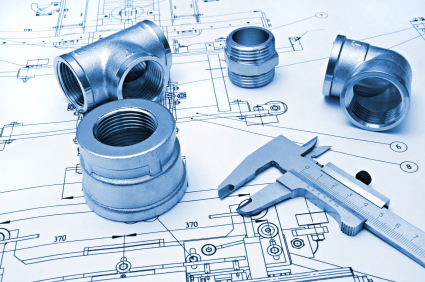Water Production And Distribution
The origin of the City's potable water supply, storage and distribution system dates back to 1894 when Well No. 1 was drilled.
At the present time, Galva produces potable water from three wells (number 4, number 5, and number 6). The City currently uses an average of approximately 400,000 gpd (gallons per day).
Well 4 was drilled in 1933 to a depth of 1,686 feet, stopping in the Shakopee Dolomite Formation. In 2004, the well was capped at 885 feet. The well pump installed in this well is a turbine pump set at a depth of 450 feet below ground level. The pump is driven by a 100 horse power motor and has a nominal pumping capacity of 410 gpm. Water from the pump is discharged into a 600 gpm capacity Forced Draft Aerator. This unit sits approximately 20 feet above ground storage level, being mounted on top of a 43,000 gallon steel ground storage tank.
Well 5 was drilled in 1988 to a depth of 1,770 feet, stopping in the Shakopee Dolomite Formation. In 2005 the well was capped at 834 feet. The well pump installed in this well is a submersible pump set at a depth of 540 feet below ground level. The pump is driven by a 125 horse power motor and has a rated pumping capacity of 410 gpm. Water from the pump is discharged into a Forced Draft Aerator, which is mounted on top of a 20,000 gallon Ground Storage Tank.
Well 6 was drilled in 2016 to a depth of 800 feet, stopping in the Shakopee Dolomite Formation. The well pump installed in this well is a submersible pump set at a depth of 540 feet below ground level. The pump is driven by a 125 horse power motor and has a rated pumping capacity of 410 gpm. Water from the pump is discharged into a Forced Draft Aerator, which is mounted on top of a 20,000 gallon Ground Storage Tank.
Though located about 3/4 of a mile from each other, all three well sites work in together to supply water to the citizens of Galva through a series of interconnecting 6" and 8" water mains that form the heart of the City's Distribution System.
Wastewater Collection And Treatment
The City's sewage treatment process consists of two plants. The North Treatment Plant (NTP) is an activated sludge plant that discharges into an unnamed branch of the Edwards River. The South Treatment Plant (STP) is an aerated lagoon system that discharges into Mud Creek, a tributary of Walnut Creek, which itself is a tributary of the Spoon River.
The NTP treats a design average flow of 0.385 MGD (million gallons per day) with a design maximum flow of .867 MGD. Discharge from the plant is permitted under an NPDES permit.
The STP treats a design average flow of 0.3 MGD and a design maximum flow of 1.0 MGD. Discharge from the plant is permitted under an NPDES permit.
Maintenance
The City's Water & Sewer Department is responsible for repairing water and sewer main breaks, performing water and sewer locates, and ensuring cross connection and back flow prevention.
In addition, the Department is responsible for installing, reading and maintaining both residential and commercial water meters.
The Department's responsibility typically ends at the property line. Specifically, the Department's responsibility for water service spans the main to the curb stop (which typically can be found at the property line); for the collection of sewerage, the Department's responsibility begins at the sewer main. The sewer line connecting the structure to the main is the property owner's responsibility.
